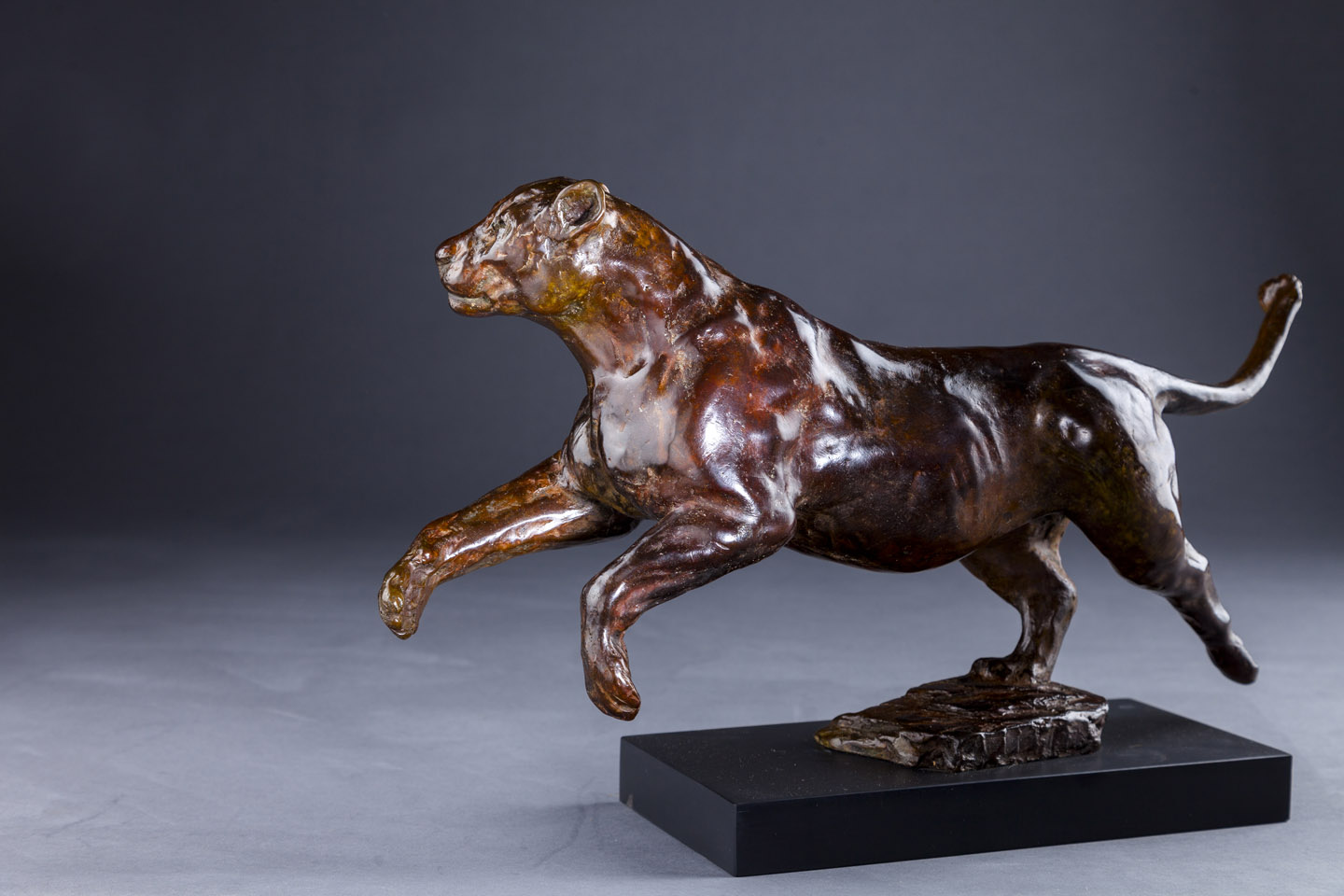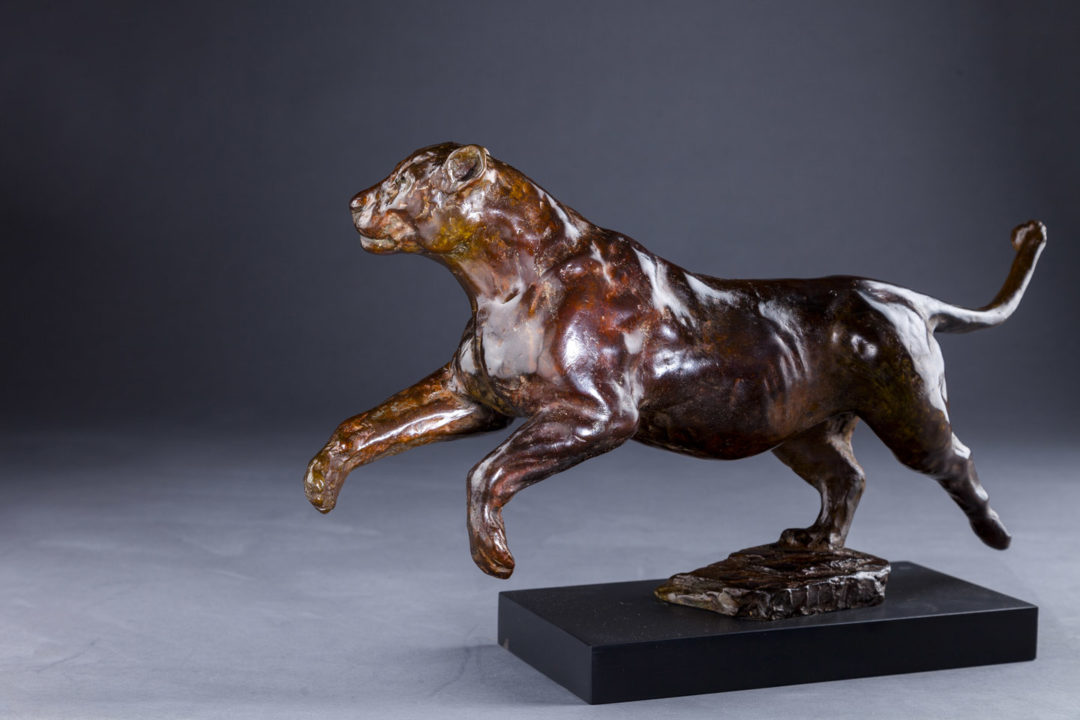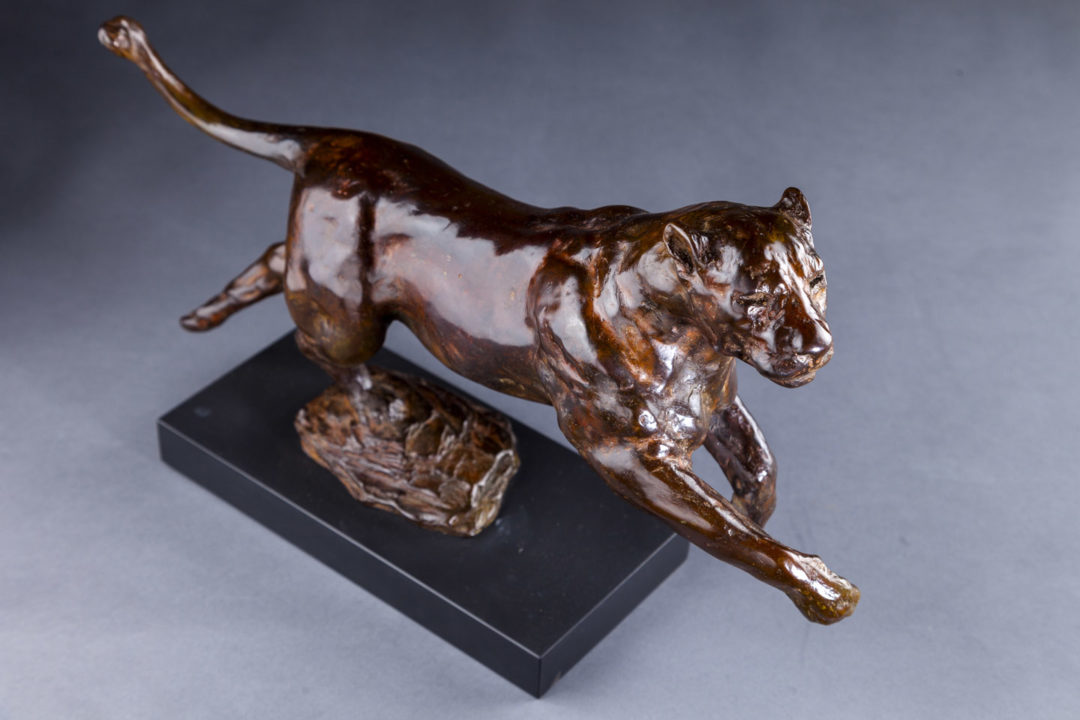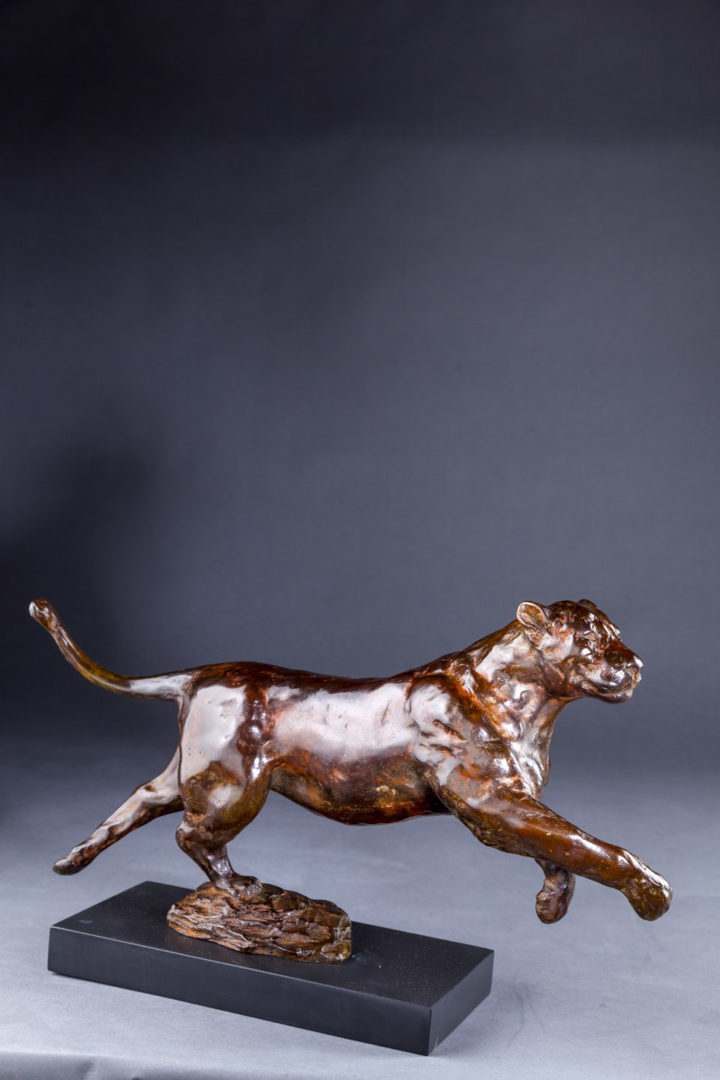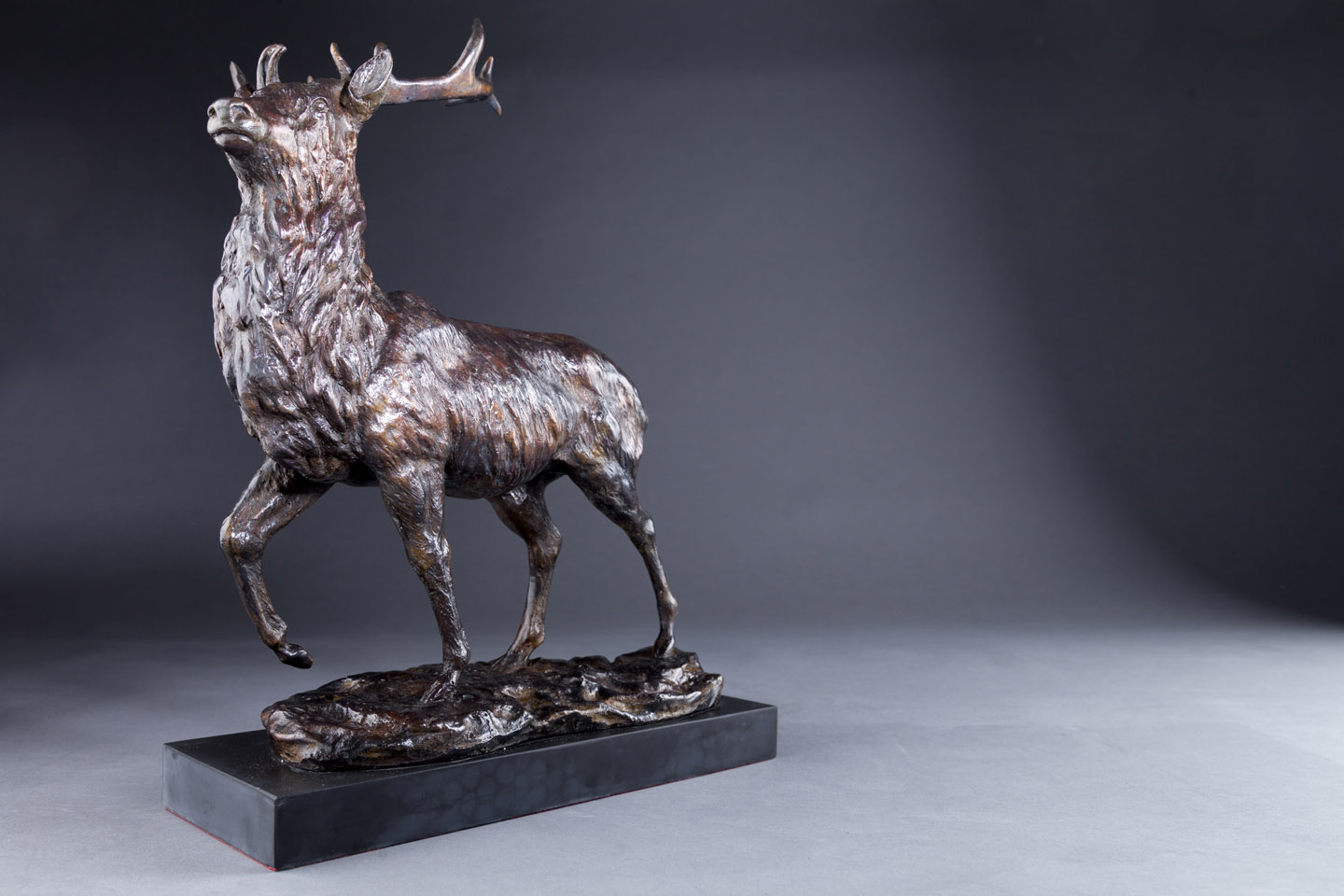Wales Contemporary
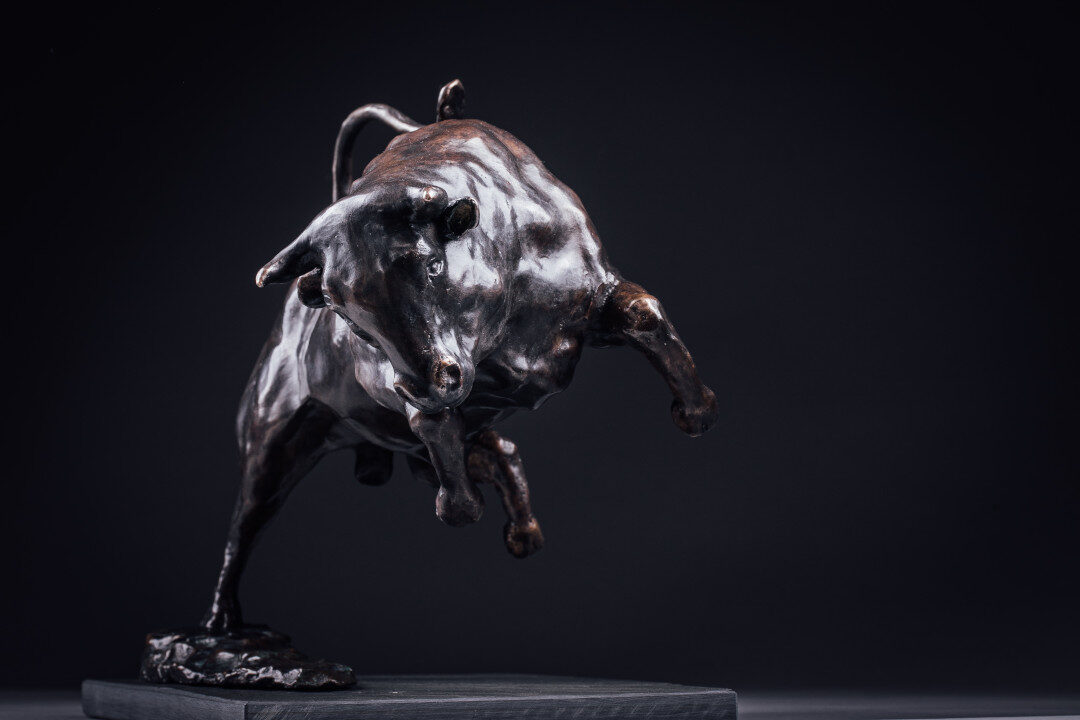
I’m so excited to announce that this piece won second place in this year’s Wales Contemporary, an international competition developed by the Waterfront Gallery in association with the Welsh Government.
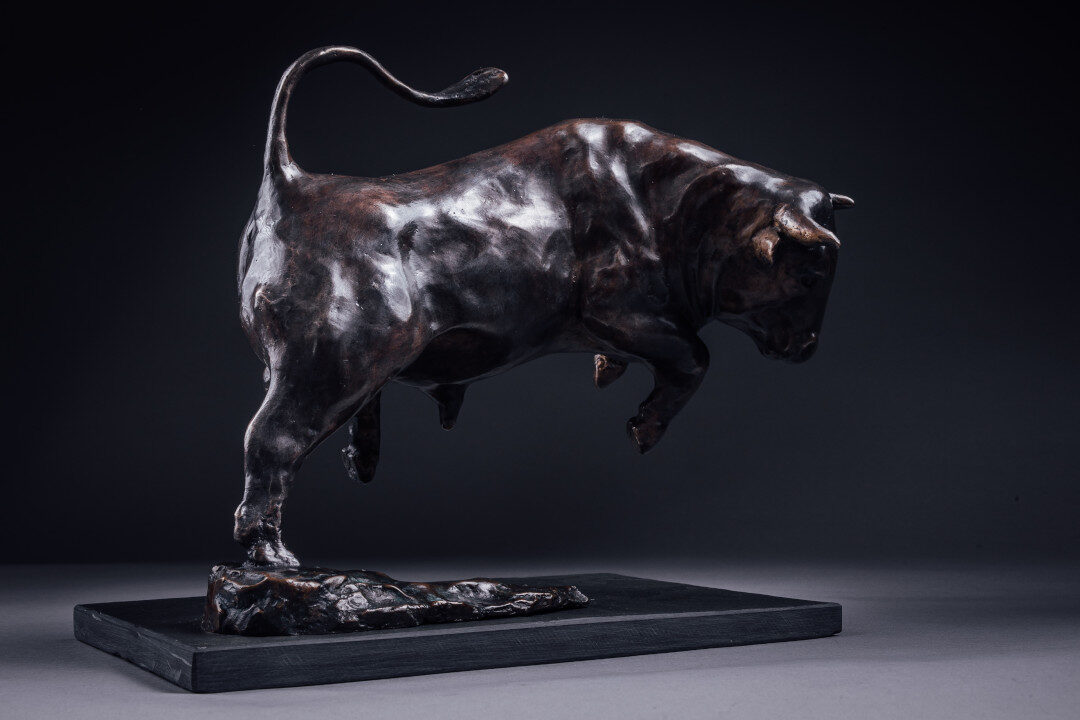
The piece is a celebration of the freedom and exhilaration of cattle as they’re let out onto the grass in spring.
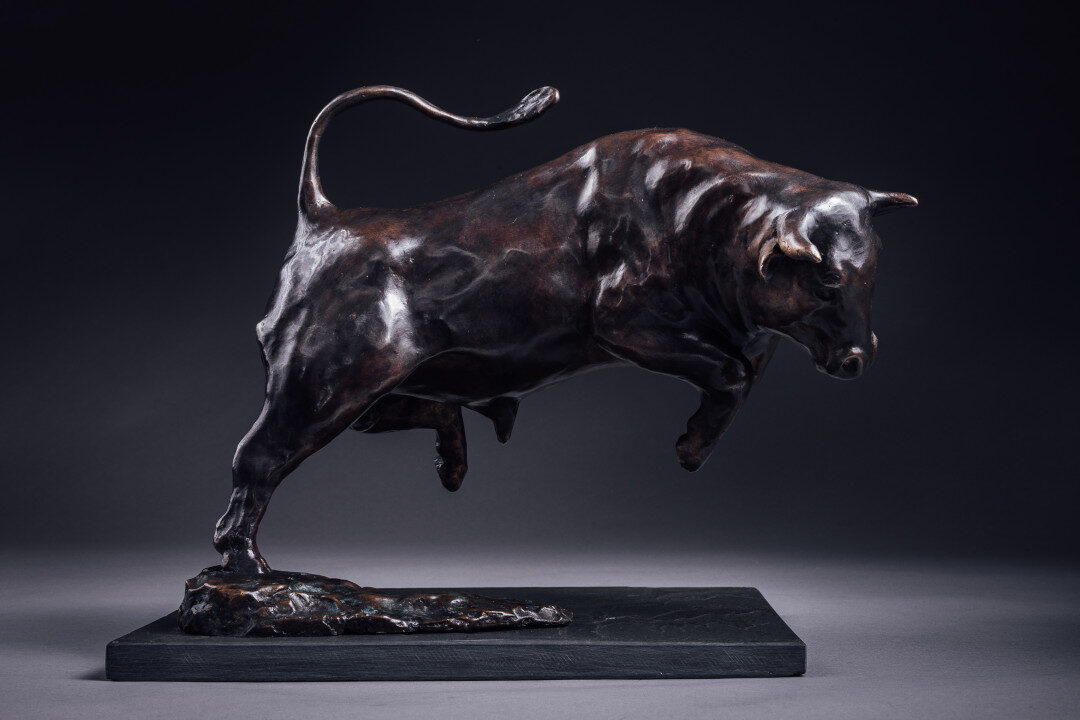
It’s always such a delight to see the cattle – confined indoors all winter – let out onto the grass in spring. It’s always arresting to see how agile they are in spite of their size, and to witness their joyous exhilaration and sense of freedom. The piece is called “Out to Spring Grass” and is cast in bronze. You can find more pics here.
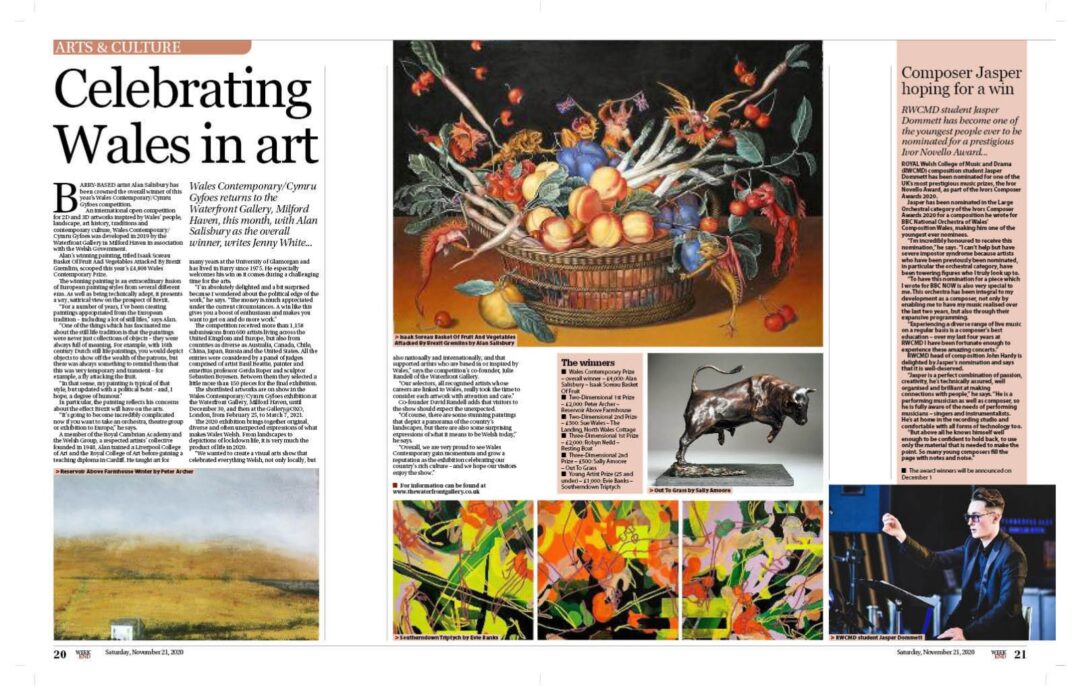
A challenging new commission…
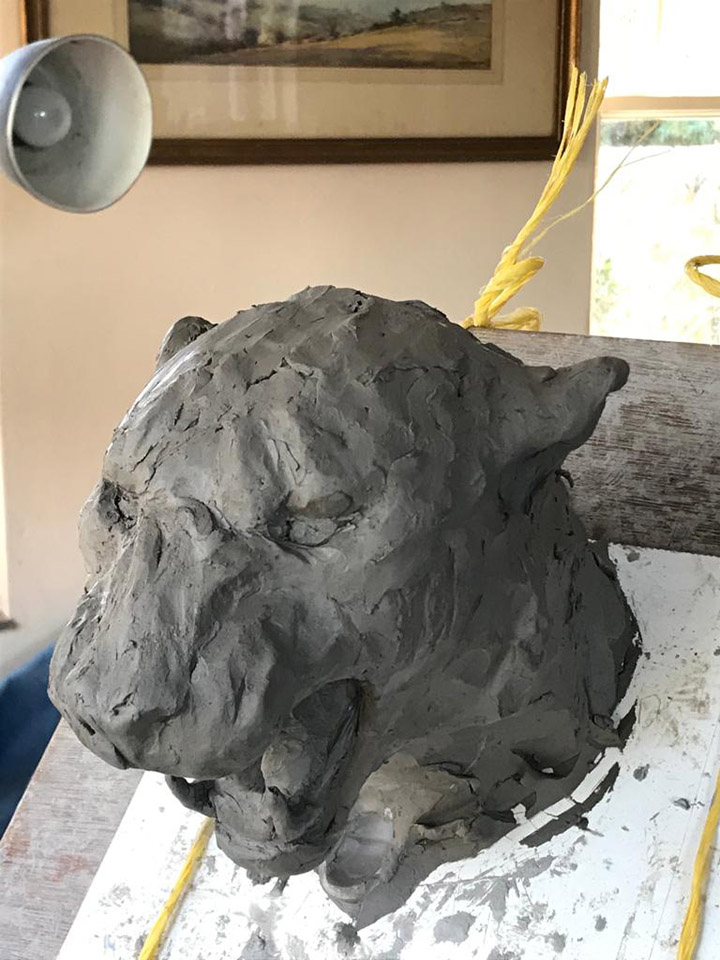
A challenging new commission: replacing a ‘weathered’ man-eating stuffed tiger head with a bronze version. It will be life size and seen from different levels in the entrance hall of a beautiful Welsh castle. So people will see it from below, looking into its fearsome mouth and they’ll meet the tiger eye to eye before descending the steps into the entrance hall, where it will be hung.
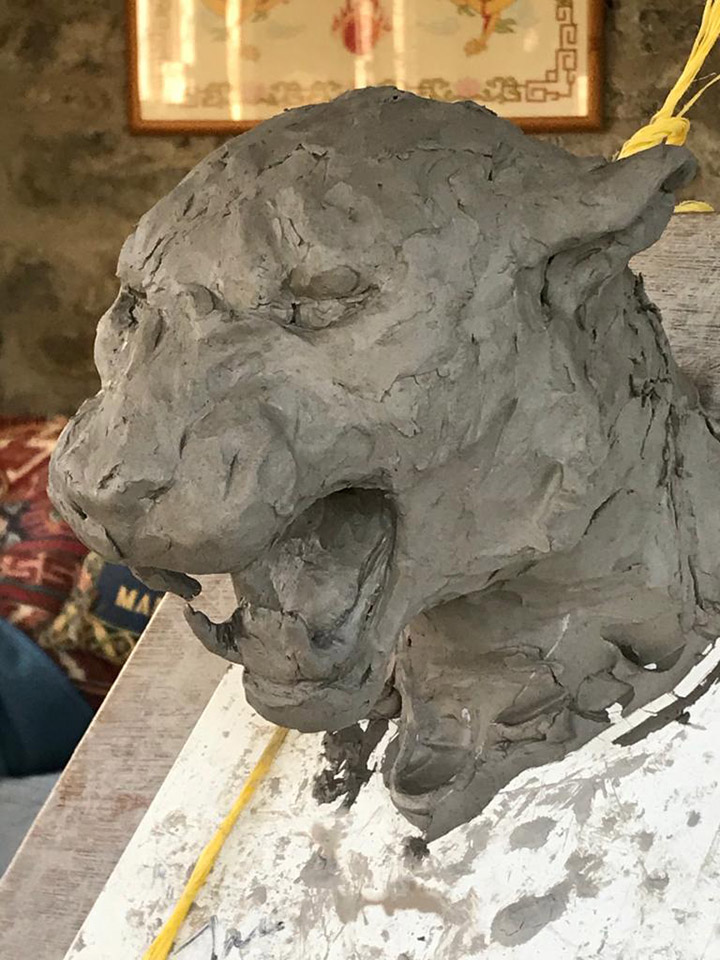
It will be the first thing you see when you enter the castle so really happy to have been given the chance to do this. The challenge is to make a tiger look like a tiger without the embellishment of its stripes.
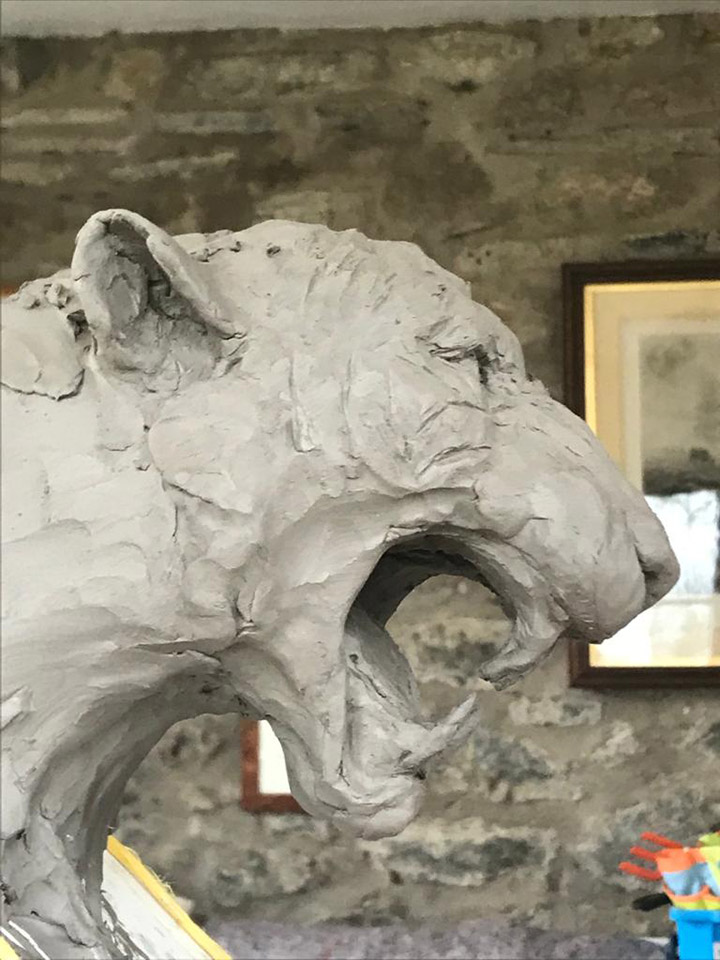
Somehow got to work out how to make stripes without the help of paint. Looking forward to making it work.
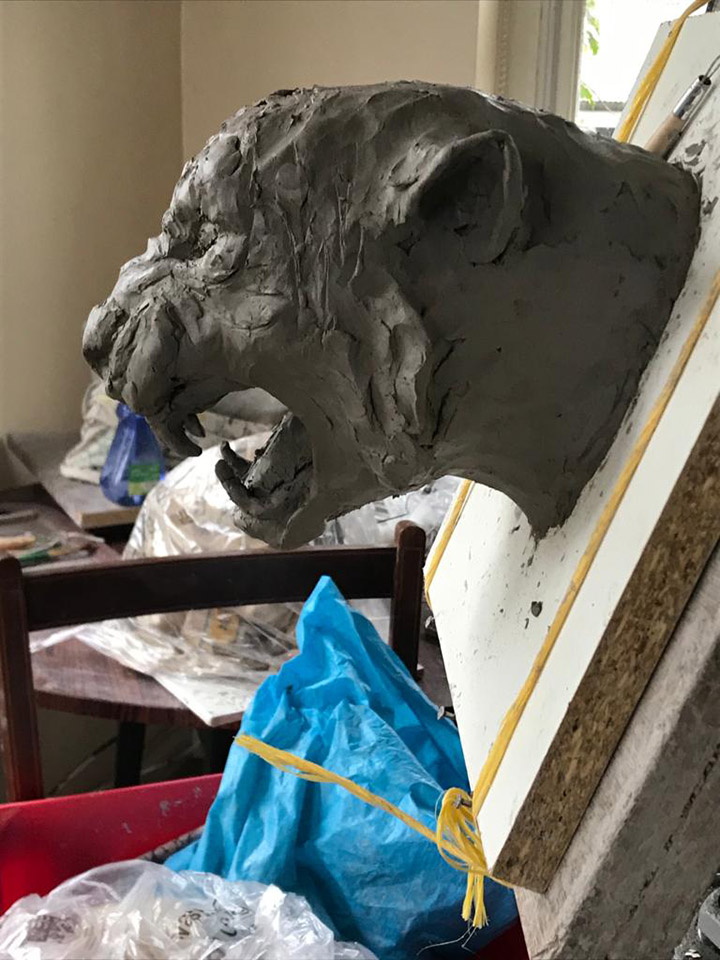
Two new pieces…
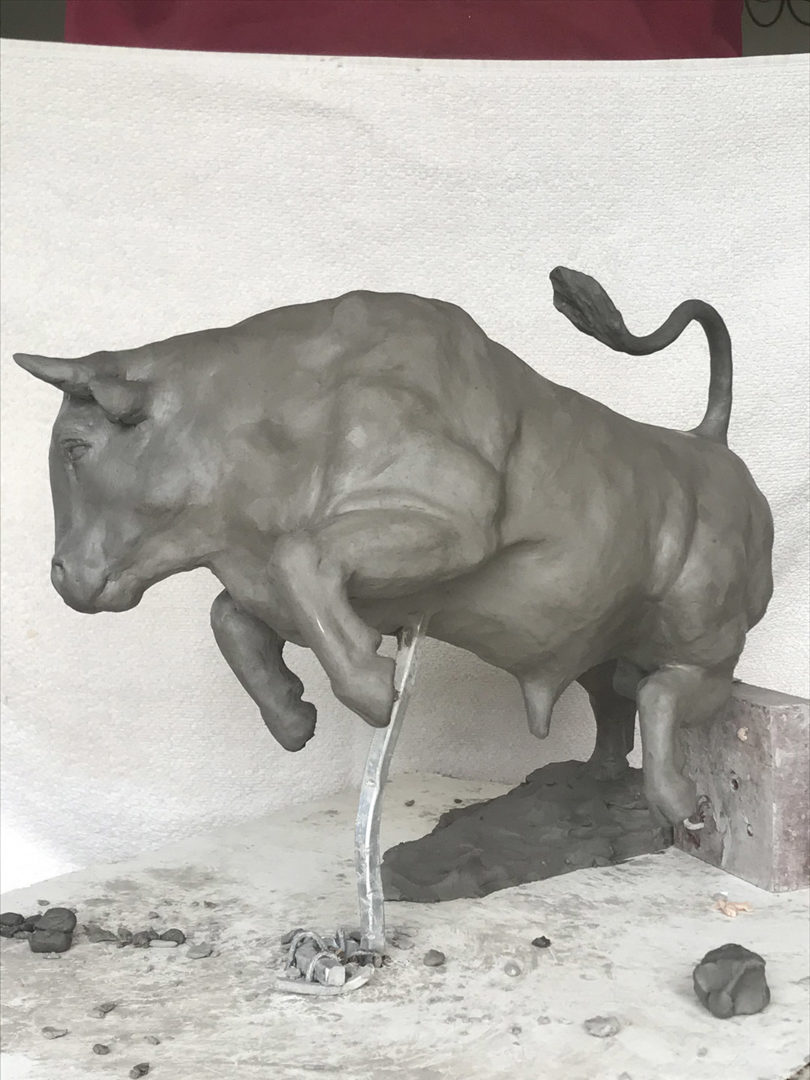
Sally is working on two new pieces for Wales Contemporary / Cymru Gyfoes, an international open competition developed by the Waterfront Gallery, where Sally is artist-in-residence. Wales Contemporary invites artists to submit work that is ‘Inspired by Wales’ – by its ancient history, its art history, its heritage, its landscape (rural, urban or political) and its contemporary culture.
The Waterfront Gallery
Wales Contemporary / Cymru Gyfoes
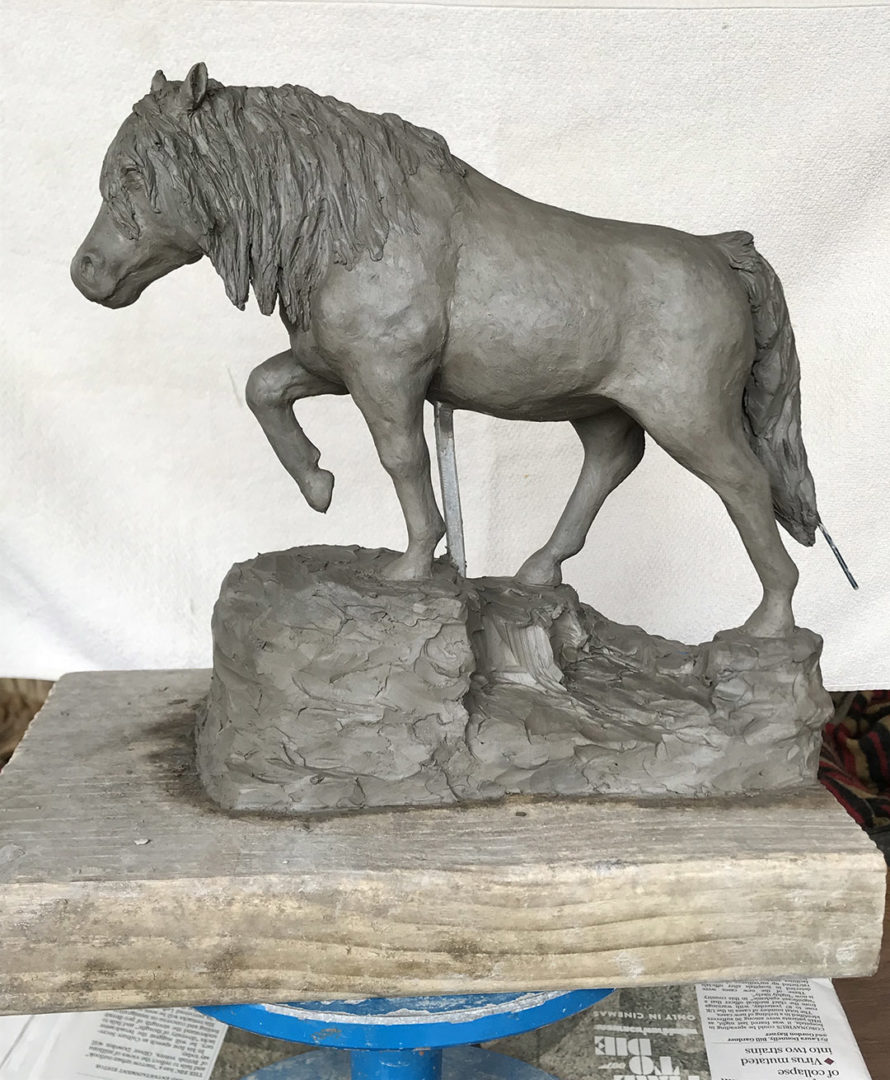
The first piece is of a wild Welsh mountain pony. The piece is an acknowledgement of the crucial role these ponies played in Wales’ coal mining industry and a celebration of their return to the wild.
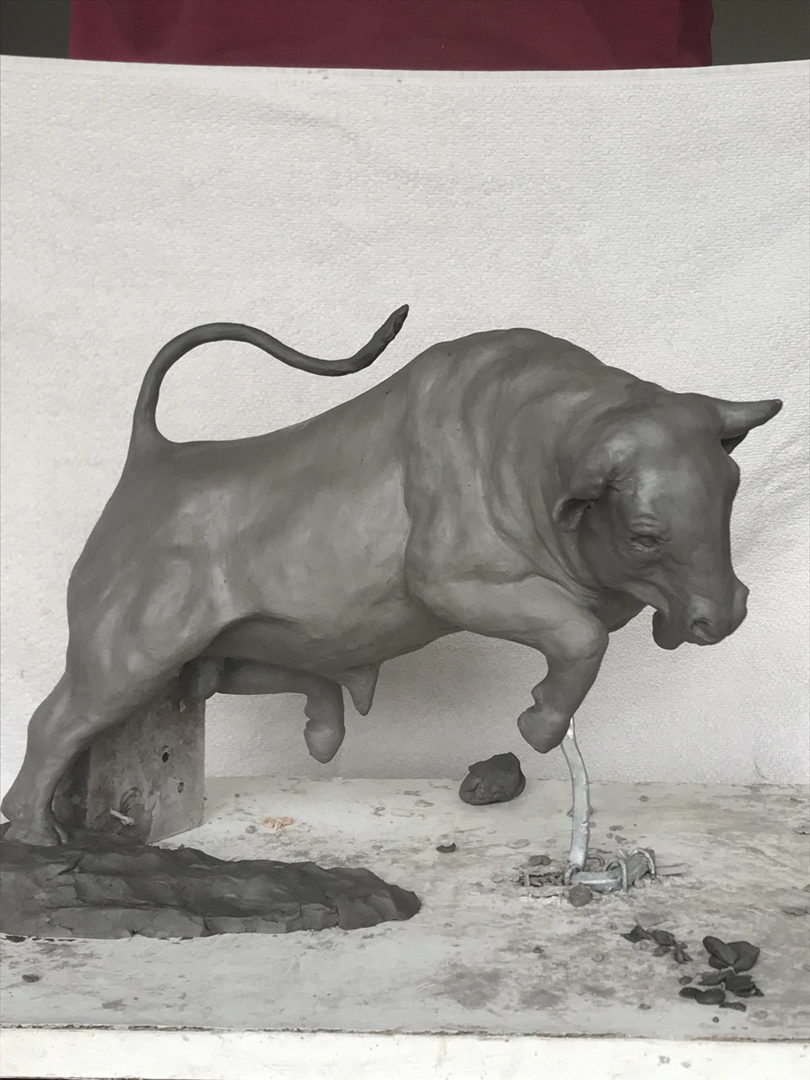
The second is of a young bull out on the spring grass. These animals have been played a vital role in Wales’ agricultural sector, which has been a cornerstone of the country’s economy.
Both will be off to the foundry soon.
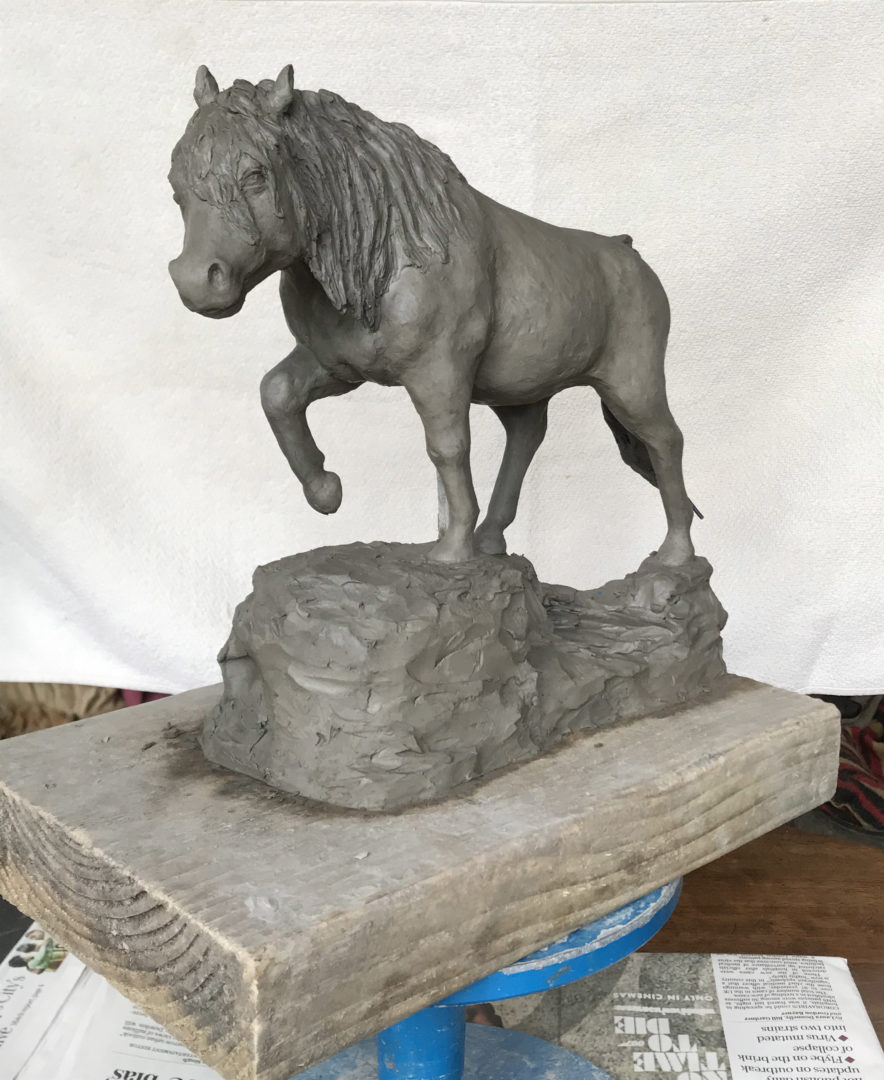
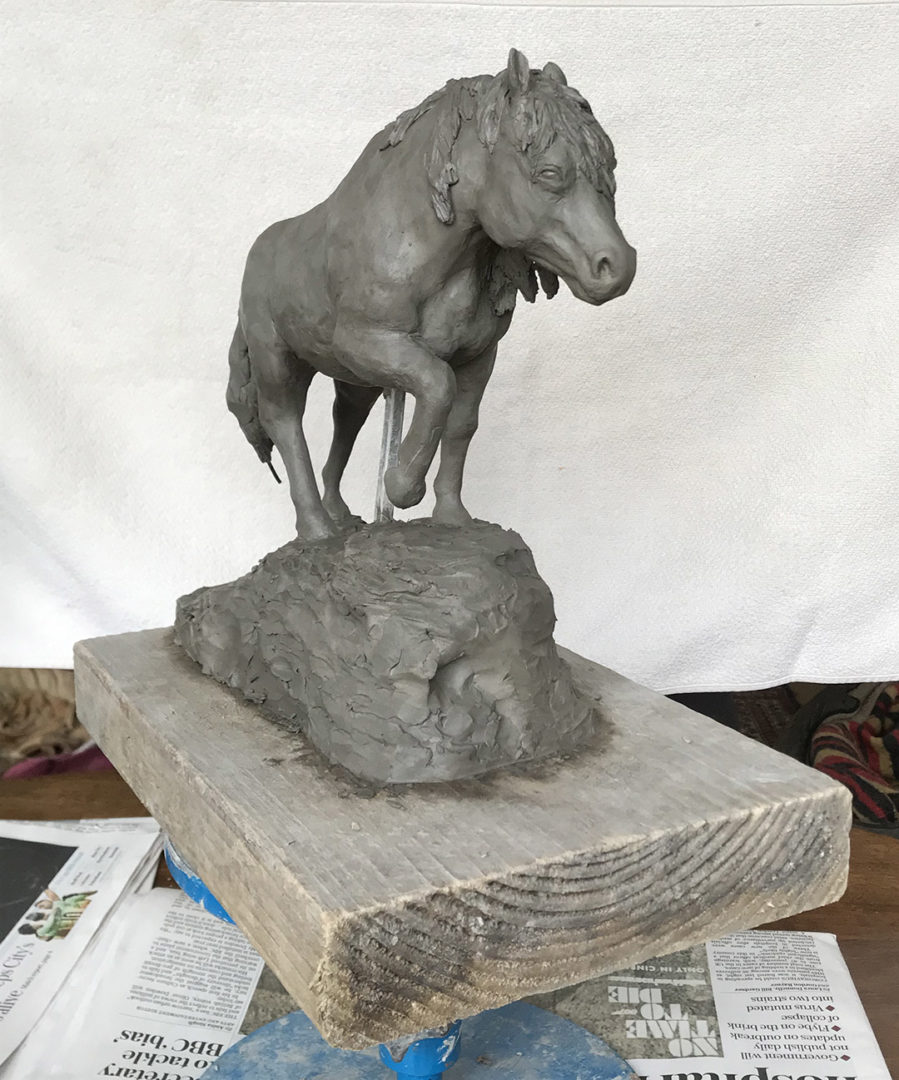
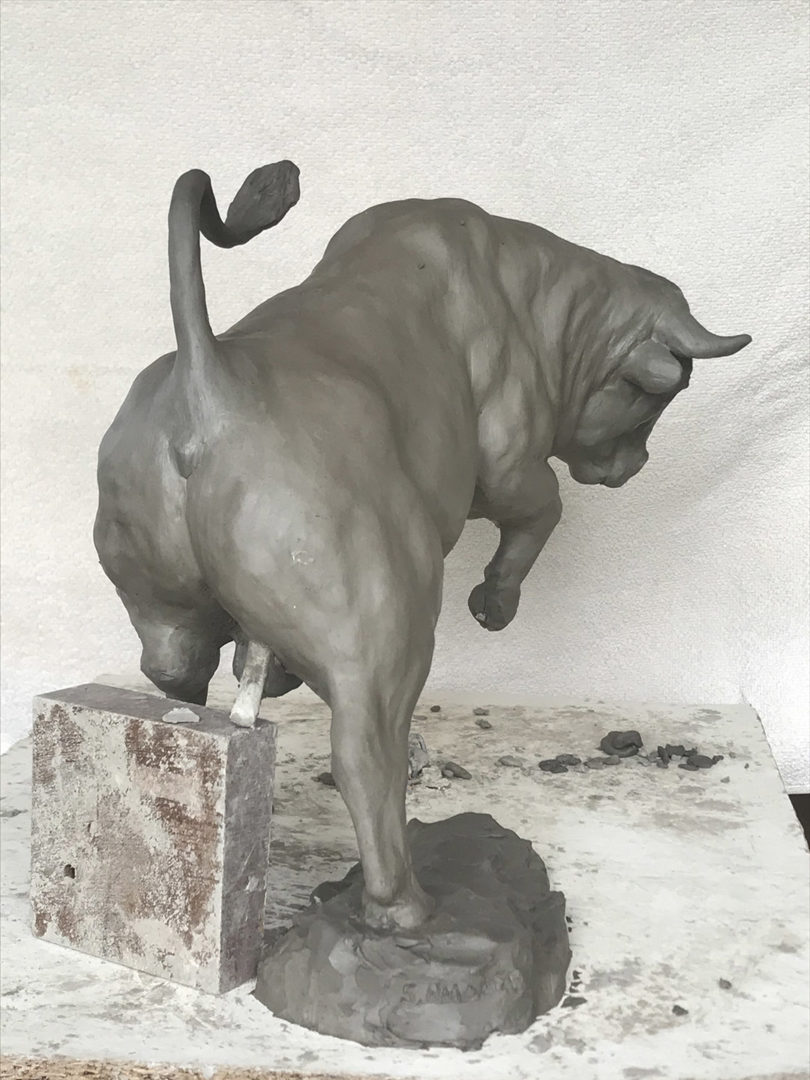
Piece Highlight: Lioness
One of the most widely recognised animal symbols in human culture, the lion has been extensively depicted in various artforms, on national flags, and in contemporary films and literature. It appeared as a symbol for strength and nobility in cultures across Europe, Asia and Africa. The lion has been depicted as “king of the jungle” and “king of beasts”, and thus became a popular symbol for royalty and stateliness.
The lion prefers grassy plains and savannahs, scrub bordering rivers and open woodlands with bushes. It is absent from rainforest and rarely enters closed forest. In Eurasia, the lion once ranged from Greece to India; Herodotus reported that lions had been common in Greece in 480 BC but today it has been reduced to fragmented populations in Sub-Saharan Africa and one critically endangered population in western India.
Sculpted in 2009 by Sally in a limited edition of 8. For more details see the Lioness art-work page or click here. For inquiries contact Sally now or click here.
Piece Highlight: Highland Stag
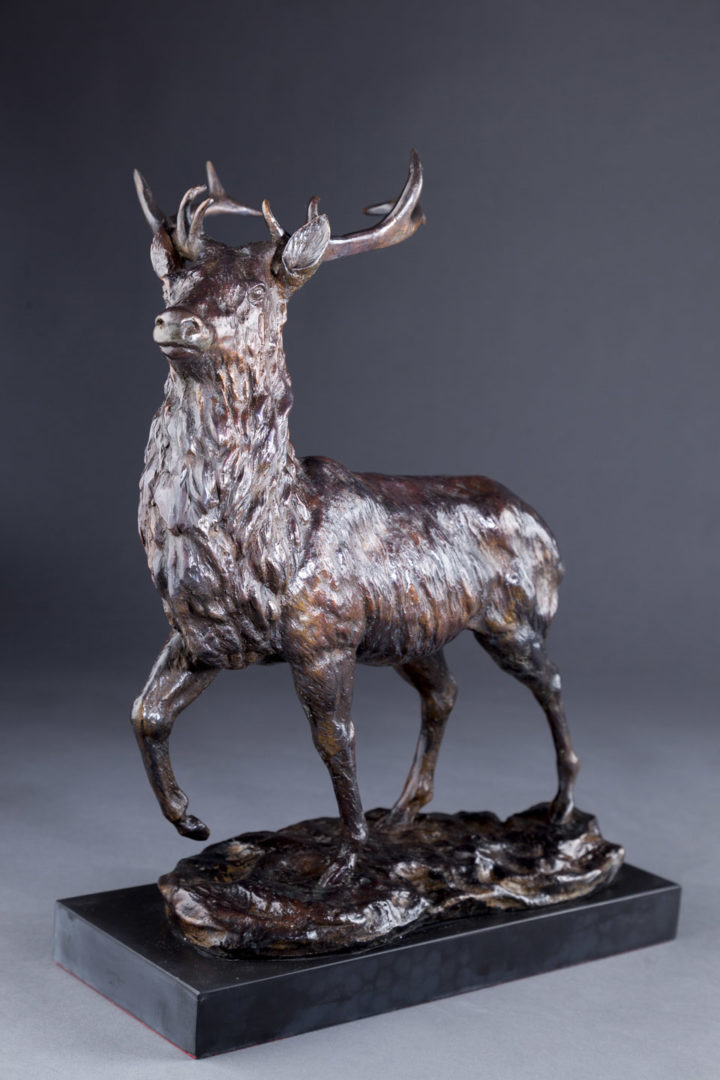
The Highland Stag is a subspecies of Red Deer native to Great Britain. This deer is slightly smaller than other Western European red deer. In summer, the coat is lighter in colour with a distinct border to the lighter patch on the rump. The rest of the colour is dark reddish brown with a greyer face and neck. The legs are blackish brown. In winter the animal grows long hair on the neck. The brow and the bez tines of the antler are usually close together and at a distance above the burr.
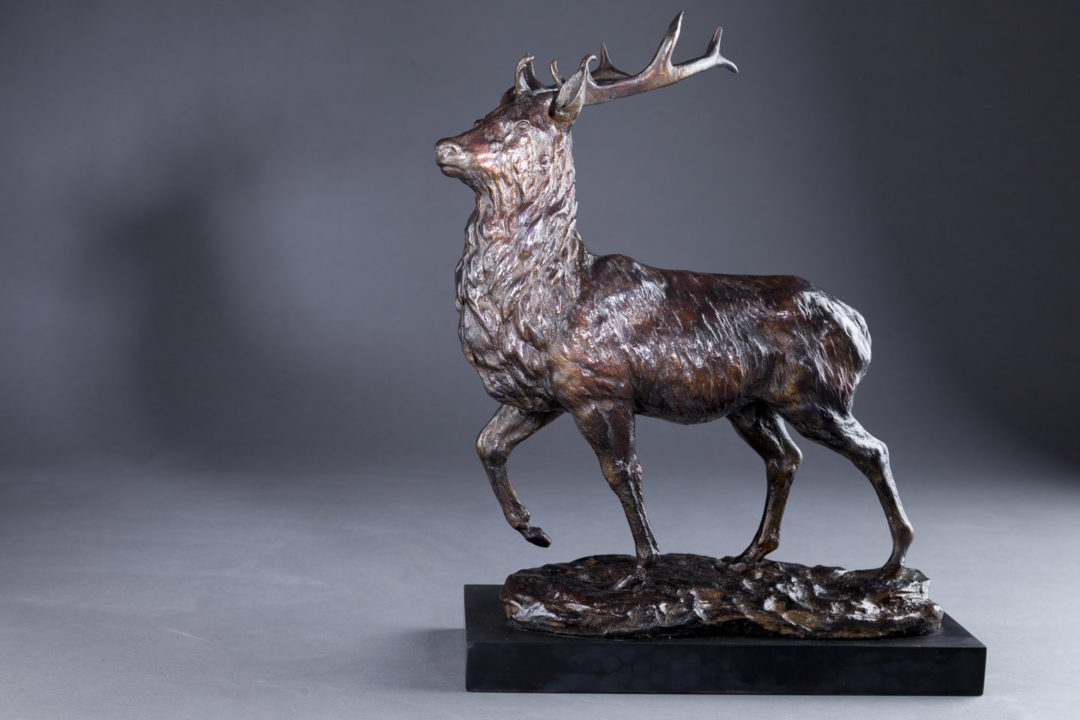
This deer thrives in the Highlands and Islands of Scotland and in parts of England such as Westmorland, Devon, Somerset, Wiltshire and the New Forest. It is also found in County Kerry and Donegal in Ireland. However, most of the red deer kept in parks in the British Isles are derived from the larger subspecies brought from the European mainland, the Western European Red Deer.
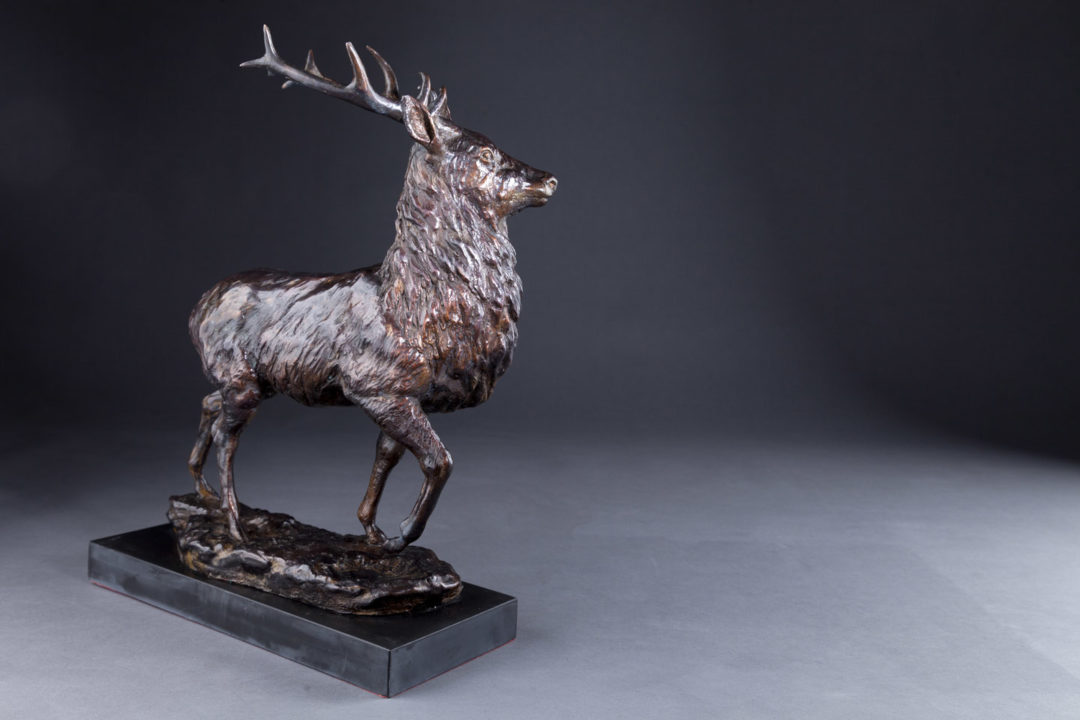
Although mostly found in the north of Scotland, there are reports of deer being spotted in the Borders.
Sculpted in 2003 by Sally in a limited edition of 8. For more details see the Highland Stag art-work page or contact Sally now or click here.
Piece Highlight: Cheetah
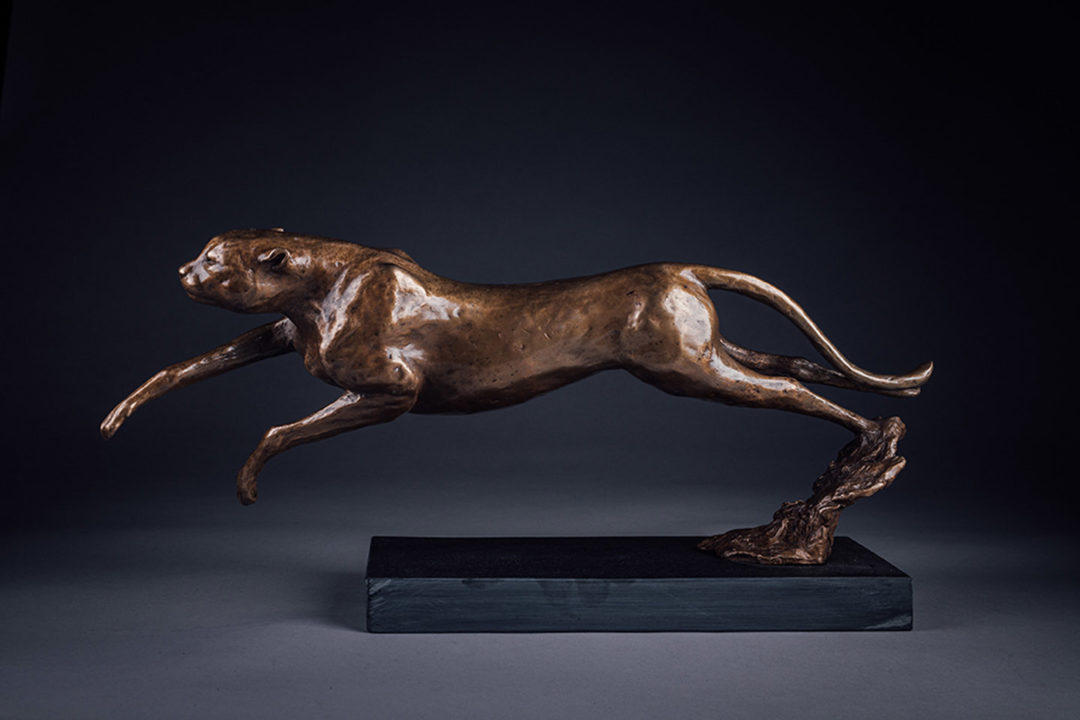
The Cheetah is the fastest land animal on the planet. Achieving speeds of upto 64 km/h (40 mph) while hunting but are capable of accelerating up to 112 km/h (70 mph).
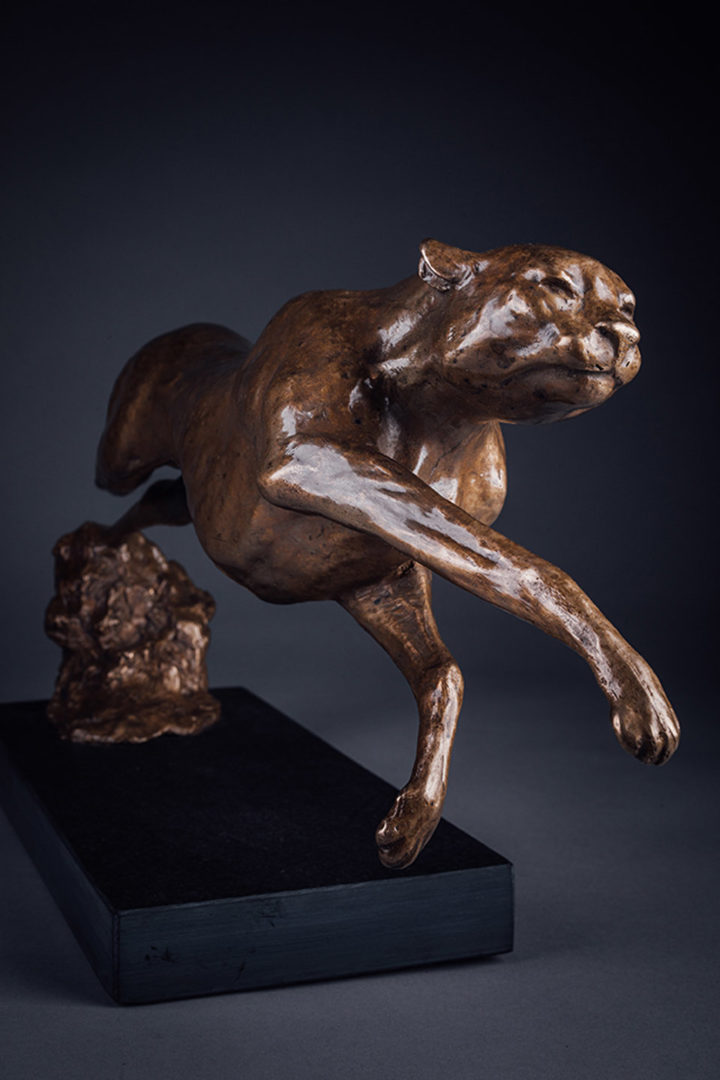
The cheetah is threatened by habitat loss through agricultural and industrial expansion; moreover, the species apparently requires a large area to live in as indicated by its low population densities. It appears to be less capable of coexisting with humans than the leopard. Human interference disturbs hunting and feeding of cheetah. With 76% of its range consisting of unprotected land, the cheetah is often targeted by farmers and pastoralists who attempt to protect their livestock. However, cheetah is not known to prey on livestock.
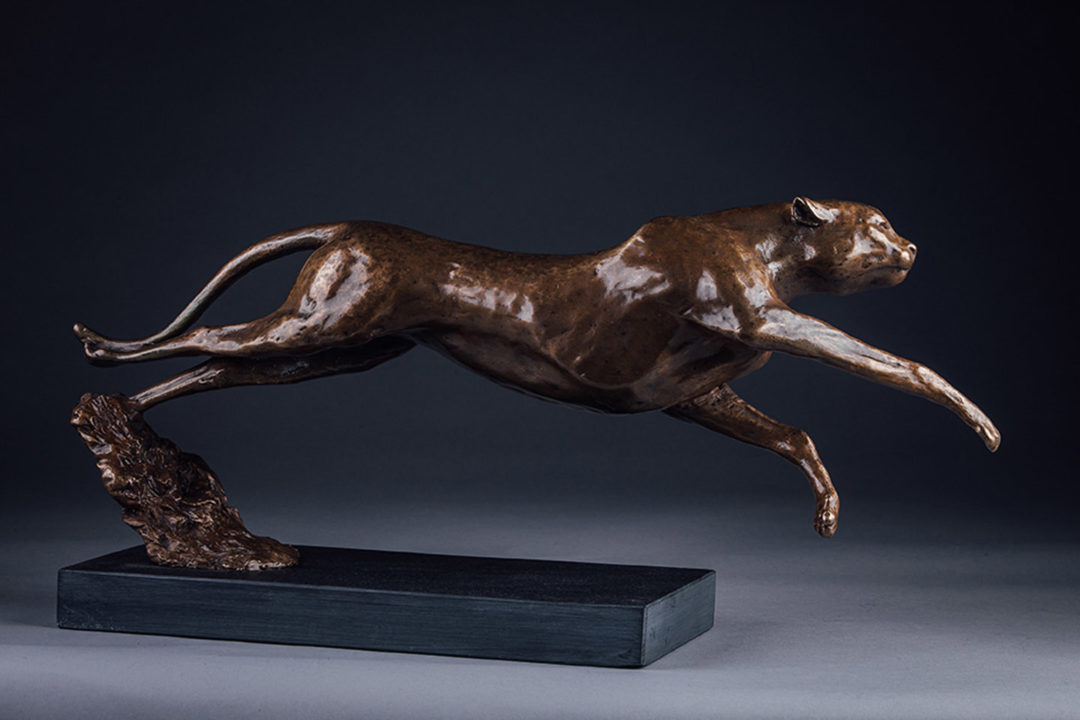
In 2016, it was estimated that there are just 7,100 cheetahs remaining in the wild, and simulation modelling suggested that they are at risk of extinction.
Sculpted in 2019 by Sally in a limited edition of 8. For more details see the Cheetah art-work page or contact Sally now or click here.
